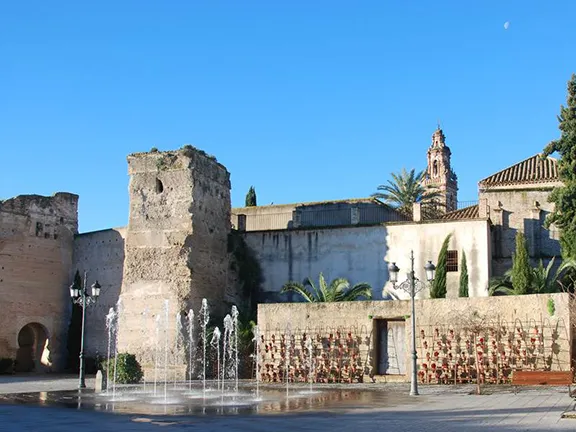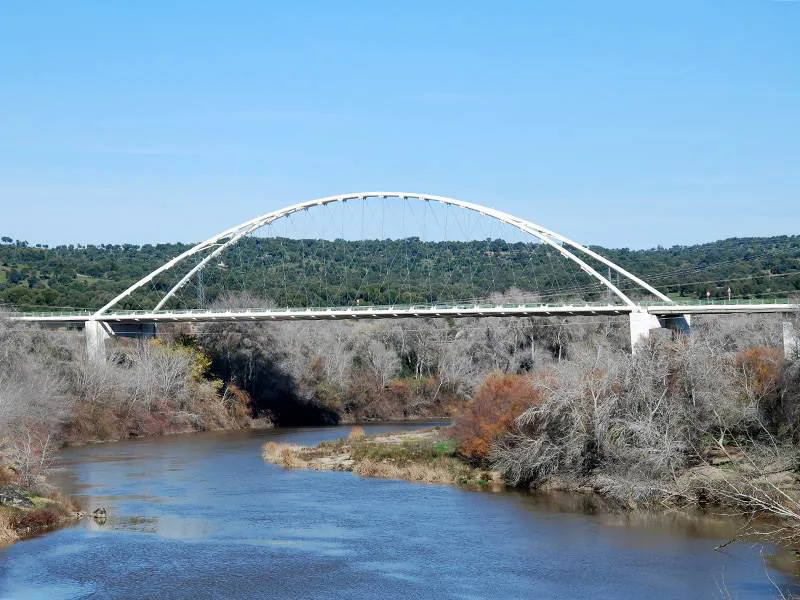Expert guide to Palma del Rio. Known by the Romans as Segina Augurina and conquered by the Moors. Palma del Rio is a Mediaeval walled town
By Nick Nutter | Updated 15 Mar 2022 | Córdoba | Villages |
Login to add to YOUR Favourites or Read Later


Mediaeval Walls
At the confluence of the two largest rivers in Andalucia, the Guadalquivir and Genil, the town of Palma del Rio occupies one of the oldest inhabited sites in the province. Evidence of prehistoric settlements, through the metal ages to Tartessian, has been found at numerous locations near the town and the artefacts are displayed in the town’s archaeological museum. The prize exhibit must be a typical Tartessian bronze jug in excellent condition.


During the Roman period, the Rio Guadalquivir (Baetis) and Rio Genal (Singilis) were navigable as far as Córdoba and Ecija (Astigi) respectively. There are an amazing number of sites, about 90, between Carmona and Córdoba, along both rivers that were engaged in the manufacture of amphorae or the business of filling them and loading them onto boats to travel to Seville. From there the cargoes moved onwards into the Atlantic, through the Strait of Gibraltar into the Mediterranean and eventually to the eastern Mediterranean. They carried the olive oil and other agricultural goods for which the area was then famous. According to Pliny the Elder, the town was then called Segina Augurina, one of the more important cities in Baetica.


The Alcazar
The town is probably best described as a Mediaeval city since much of what is now visible dates from that period. The walled enclosure that you encounter as soon as you enter the main square, Plaza Mayor, surrounds the Alcazaba. The walls date from the 12th century AD a period when the slowly advancing Christian reconquest of Spain was approaching the taifa of Córdoba. Palma del Rio was reconquered 250 years before Granada, in 1241, by Ferdinand III.


Traditional Pedestrians
Palma del Rio became a feudal estate in 1342 when King Alfonso XI gave the land to the Boccanegro family following the defeat of an English convoy at La Rochelle. Almirante Ambrosio Boccanegro commanded the triumphant Castilian fleet.


Tartessian Jug
The period between its reconquest and that of Spain as a whole in 1492, was a time of peace and prosperity for the population that was composed of a mixture of Muslims, Christians and Jews.


New Cantilever Bridge
The 16th and early 17th centuries were when Palma del Rio reached its most significant influence and wealth. This may be due in some measure to the town being the home of Juan Rodriguez Cabrillo, the man responsible for conquering Mexico and Guatemala and who then went on to explore California. In any case, many of the buildings in the town are magnificent and date from this period. The most outstanding is Portocarrero’s Palace, that was built on the part of the, by now crumbling, Alcazar. You can visit part of the Palace which houses the archaeological museum.
Historically, the economy of the area is based on agriculture. During the Moorish occupation, oranges became an important crop, and they remain essential today. A selection of the different orange species grown in the area have been planted within the Alcazar gardens to celebrate the orange and emphasise its value to the town.
During the 19th century, the town found itself of the south side of the Guadalquivir while the newly constructed railway between Seville and Cordoba was on the north side. The iron bridge that now connects the town with its railway station was built in 1885 by a French engineer called Jean-François Cail.
The elegant network arch bridge upstream of the old bridge was completed in 2008, relieving the old bridge of much of its vehicular traffic, leaving it to more traditional pedestrians.
As with many of the inland agricultural towns, the late 1960s saw many of the younger members of the population leaving and emigrating to other parts of Europe and, in Palma’s case, to Cataluna. Today the community is around 21,000 people. Slowly the town is re-branding itself and attracting more visitors and businesses.